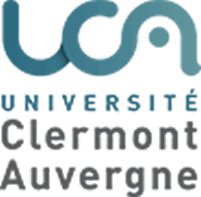About the Project
Within the French ANR project "Plug-and-Bose" (2016- 2020), the “Optical Spectroscopy of Solids” group will participate to the design and the study of an electrically injected polariton laser operating at room temperature (RT) in the ultraviolet range and to the evaluation of its performance as a potential low-power-consumption coherent source. In this new kind of laser, the "gain" mechanism is not the stimulated emission but the stimulated polariton scattering by the final state. This process can take place at a much lower particle density, and light sources with thresholds of one to two orders of magnitude smaller than those corresponding to conventional laser diodes, have been predicted and observed.
Two geometries will be explored. The first one consists of a vertical microcavity structure in order to obtain cavity polaritons under strong light-matter coupling and their condensation in the ground state. This geometry, the most mature in polaritonics, has been already tested by our consortium1,2 under optical pumping but the demonstration of an electrically injected vertical-cavity surface emitting (polariton) laser (VCSEL) at RT would constitute a major breakthrough in the field of polaritonics. The second kind of structures that will be studied relies on the use of a slab waveguide to obtain guided polaritons resulting from the strong coupling between a guided mode and excitons with an emission by the edge.
In this context, this thesis will address several items:
• the experimental study of planar GaN and ZnO based microcavities under optical and electrical injections; the aim is to obtain the lowest laser threshold (cavity optimization, use of polaritonic traps, …),
• the optimization of polariton waveguide structures (numerical simulation of modes, optical confinement),
• the experimental evidence of the strong coupling regime in polaritonic waveguides. It will be carried out in a guiding structure on which two diffraction gratings have been printed for injection and collect of the light.
The candidate for this thesis will have a special taste for the experiments. He will use various optical spectroscopy techniques (micro-photoluminescence, direct space imaging, Fourier imaging, micro-reflectivity, interferometry,...). He should also master the fundamental concepts (physics of semiconductors, optics) required to interpret and simulate the experimental observations.
(1) O. Jamadi, F. Réveret, E. Mallet, P. Disseix, F. Médard, M. Mihailovic, and D. Solnyshkov, G. Malpuech, J. Leymarie, S. Bouchoule, X. Lafosse, F. Li, M. Leroux, F. Semond, J. Zuniga-Perez, Phys. Rev. B 115205, 1 (2016).
(2) F. Li, L. Orosz, O. Kamoun, S. Bouchoule, C. Brimont, P. Disseix, T. Guillet, X. Lafosse, M. Leroux, J. Leymarie, M. Mexis, M. Mihailovic, G. Patriarche, F. Réveret, D. Solnyshkov, J. Zuniga-Perez, and G. Malpuech, Phys. Rev. Lett. 110, 196406 (2013).
Funding Notes
Note that the deadline for application is 25 may 2017. The candidate will have to defend his project during a presentation of 20 minutes (possibility by visio-conference) between the 12 and 16 june 2017 and a commitee will select the best candidates among various projects. Candidate are request to contact as soon as possible the supervisors. The research work will be carried out in the "Optical Spectroscopy of Solids" team, Photon group, Institut Pascal, University of Clermont Auvergne, France.

 Continue with Facebook
Continue with Facebook

